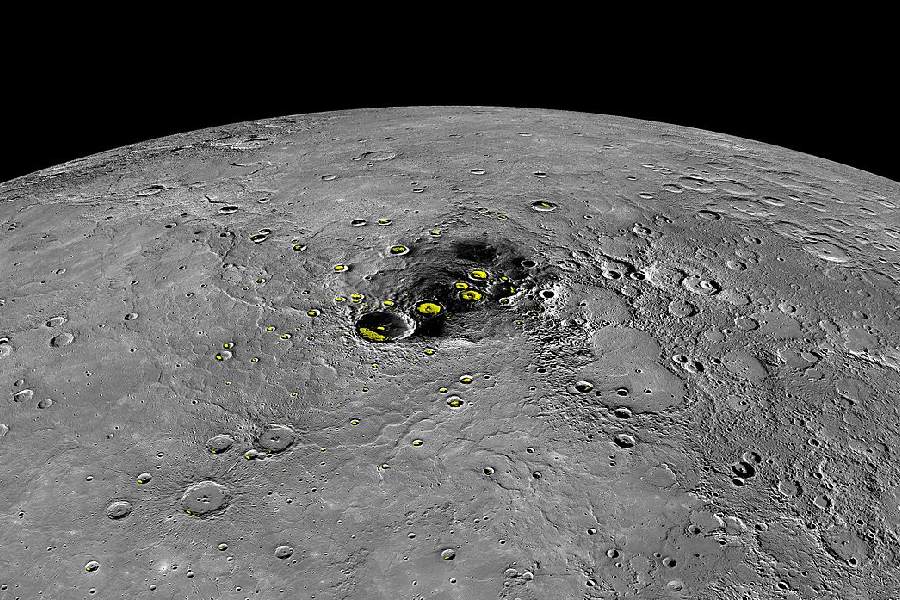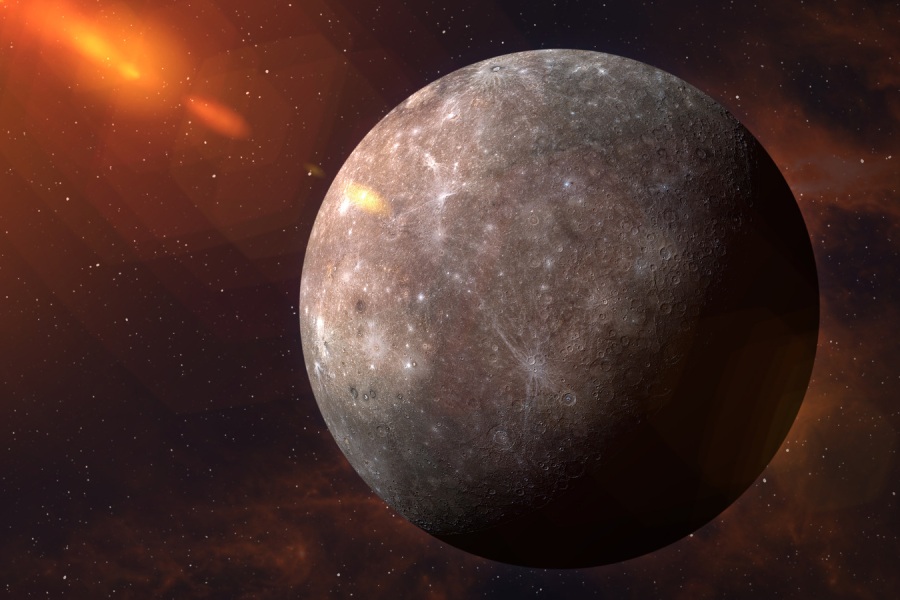Of all the rocky planets in our solar system, tiny Mercury is the densest, with a huge iron core relative to its surface size. This planet endured extreme heating early in the system’s formation that left signatures still evident today.
But new evidence reveals the planet’s exterior layers are contracting even now – 4 billion years later. So, why is Mercury shrinking long after its birth? Data gathered by visiting spacecraft and Earth-based radar observations detect small decreases over time in Mercury’s diameter.
Not only is the solid crust compacting, but the molten outer core seems to be dissipating too. What internal dynamics or surface weathering effects could generate this ongoing shrinkage?
In this article, we’ll review the remarkable evidence that Mercury is still undergoing gradual changes in size. We’ll also illuminate potential mechanisms proposed by scientists to explain these changes. Only continued study of this diminutive but dynamic world, through both robot and astronaut visits, can hope to definitively solve the puzzle of what ongoing processes could be causing this world to shrink.

Why Is Mercury Shrinking?
Why is Mercury shrinking? Mercury is shrinking due to the cooling of its interior. As its core cools, the planet contracts, resulting in surface wrinkling and shrinkage.
This phenomenon, termed ‘planetary contraction’, manifests as cliffs and ridges on Mercury’s surface. Although one of the smallest planets, Mercury remains geologically active. Its ongoing contraction suggests this activity, though slower than before.
Understanding this process offers insights into planetary evolution. It also highlights the dynamic nature of celestial bodies, including seemingly dormant ones like Mercury.
Lobate Scarps
Lobate scarps are special geologic formations first identified on Mercury. They are curved cliffs resembling the profile of a broad U-shaped bay. These scraps can stretch for hundreds of miles across Mercury’s landscape.
Typically they stand about half a mile high from base to crest. Scientists interpret them as evidence of compression folding of the crust due to the global contraction of the planet over time.
Appearance and characteristics
Lobate scarps have a distinct shape – much broader and more gently sloping than the jagged fault scarps found on other bodies like Earth’s moon.
They manifest as topographic wrinkles in the crust with a rounded rectangle profile. This profile has a long decline that slopes into a depressed trough. The trough then ramps upward again to an elevated crest on the other side.
Extending for long distances, some individual scarps have been mapped running continuously for over 600 miles in length across Mercury’s surface. Visually, they provide confirmation of the planet’s inferred shrinkage from additional measurements.
Formation of lobate scarps
As Mercury has contracted over billions of years, compression forces have buckled and folded the planet’s rigid crust. This creates lobate scarps – long curved cliffs where one section of the crust is thrust up and over another.
Ongoing shrinkage of Mercury’s large iron core is believed to put horizontal pressure on the exterior crust. This global compression generates new scarps as plates collide. The location, alignment and depth of scarps provide clues into Mercury’s interior structure and evolution.
Precision mapping of dramatic crustal folds provides valuable insights. These insights help us develop models about the dynamic processes ongoing on Mercury. Ultimately, these processes are fueled by the gradual crystallization of Mercury’s mysterious core.
Global impact of lobate scarps
The prominent lobate scarps carved across Mercury’s landscape provide surface evidence confirming gradual planetary contraction. These striking cliffs visibly demonstrate shrinkage also quantified by other measurements.
Mapping the scarps enables better constraints on the rate and distribution of compression over time. Details about their location, alignment, and depth are crucial. They contribute to models regarding the planet’s interior composition and structure.
This includes understanding the crystallizing core and properties of crust and mantle layers. The widespread lobate scarps have various effects. They influence future astronaut navigation and control communications. These scarps have reshaped Mercury visually and physically as it evolves.

Impact Gardening Theory
The Impact Gardening theory suggests continuous meteoroid bombardment on planets like Mercury. It proposes that this bombardment can recycle the upper crust. This recycling occurs at a pace similar to gradual planetary contraction. Ejected debris falls back near impact sites, masking shrinking signatures.
The global radius slowly decreases due to cooling and crystallization deep below. Surface gardening by impacts, however, could preserve average landscape elevations. This process may counteract or obscure visible evidence of Mercury’s global shrinkage over long timeframes.
Further research on the impact of gardening mechanisms is necessary. This research could determine if they only hide or actually compensate for Mercury’s reduction in dimensions. This reduction is due to the incremental solidification of its outsized planetary core.
Alternative Explanation
In addition to global compression from ongoing core crystallization, scientists have suggested secondary factors that could contribute to Mercury’s contraction. Gradual planet-wide cooling occurs over billions of years, inducing subtle thermal contraction that condenses interior materials and reduces volume.
Extreme daytime temperatures on Mercury could also vaporize volatile elements like potassium from the surface. This vaporization indirectly causes fractional global shrinkage over long timeframes.
However, measurements suggest these mechanisms alone seem insufficient. They cannot fully explain the significant surface and interior reduction in dimensions indicated across multiple data sets.
Quantifying the roles of core solidification, volatile loss, gradual cooling, and thermal contraction requires more study. It will also likely need extensive new measurements. These would come from future orbital and landed missions to Mercury. The missions require a focused objective to study contraction.
Evidence of Shrinkage on Mercury
Is mercury really shrinking? Multiple lines of evidence from recent spacecraft and Earth observations confirm Mercury is actively contracting even today. Most dramatically, over 3,000 lobate scarps have been mapped, stretching for hundreds of miles across Mercury’s landscape.
These prominent compression folds and faults match expected deformation patterns from gradual global shrinkage over geological timescales. Precision laser altimetry quantifies tiny but measurable radius decreases decade-to-decade.
Repeated radar rangefinding also detects incremental declines in Mercury’s overall dimensions across years of tracking. Current data converges to show slight but irrefutable modern contraction. This proves that reduction mechanisms continue to reshape Mercury.
These mechanisms have been active for four billion years since its formation. Ongoing observational campaigns will further characterize the scope and specific processes behind a subtly shrinking Mercury.
Conclusion
Through ongoing observations, we’ve discovered that Mercury’s crust and interior layers are gradually contracting which leads us to ponder why is Mercury shrinking.Understanding the specific mechanisms behind Mercury’s gradual demise is important.
It offers valuable insights into how terrestrial worlds, like planets similar to Earth, evolve over time. Surface volcanic flows and a cooling, crystallizing core may explain the shrinkage. However, only additional probes and orbital data can offer conclusive evidence.
We hope this article has illuminated some of the theories proposed for Mercury’s strange, shrinking nature. Continued study of this dynamic planetary body is essential. It will further uncover clues about time-transgressive processes reshaping worlds across our cosmos slowly.
